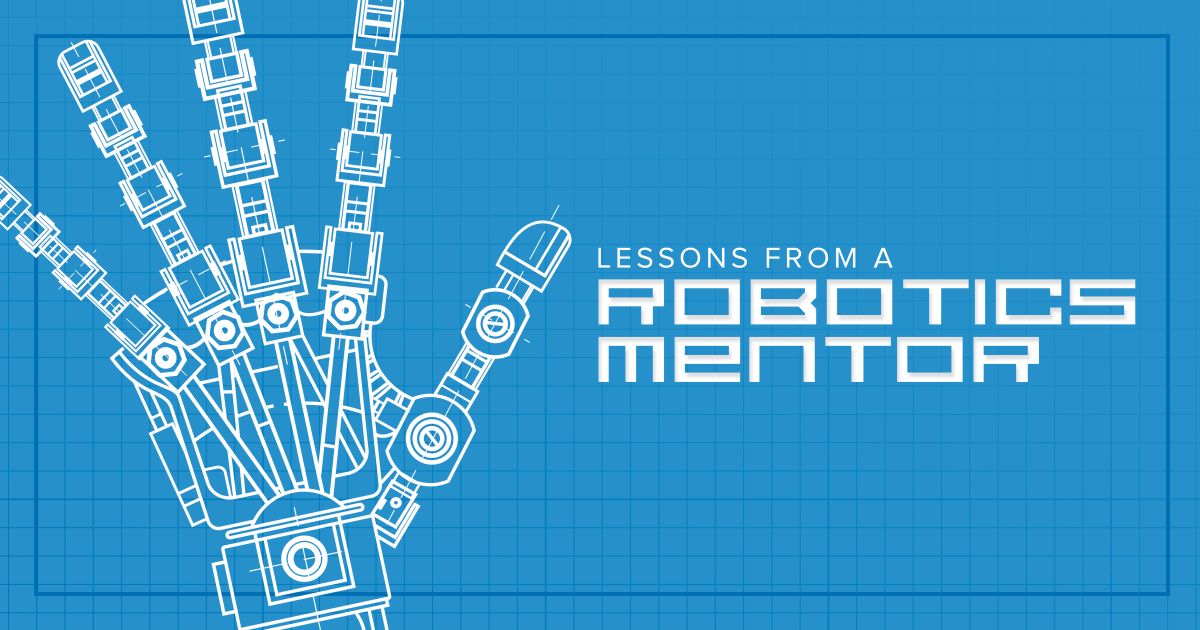For the past three years, I’ve had the pleasure of mentoring FIRST robotics team 2537 (a.k.a The Space Raiders) in Howard County, MD. I volunteered as one of 200,000 mentors that participate in the program globally. FIRST (For Inspiration and Recognition of Science and Technology) Robotics was founded in 1989 by Segway inventor Dean Kamen. The organization positions the FIRST Robotics Competition (FRC) as “the ultimate sport for the mind,” that brings together the excitement of a sporting event with the disciplines of science and technology. Their motto is “the only sport where everyone can go pro.”
I gained so much from this experience that I want to share it with others. Here are 5 important lessons I learned:
Lesson #1: Recognizing Robotics as a Competitive Sport
The competition level and commitment for robotics are equal—or greater—than a varsity sport. I was personally motivated to see the team garner as much support and recognition as our school athletes. Sometimes this felt like pushing a rock up a hill. The systems in place to support student athletes are so ingrained in our society, including coaches’ pay, school policies, and media coverage. Call me old school, but this often secretly conjured up images from the 1984 film classic, Revenge of the Nerds. Academic competitions (such as robotics) rarely receive the same accolades as athletics programs, but they teach students valuable skills. However, as the importance of STEM in school curricula has increased, recognition for academic competitions have come a long way.
Lesson #2: Learning from Reverse Mentoring
I had as much to learn from the students as they had to learn from me. I learned all the cool lingo and the latest memes. We even shared our love of episodes from the TV show, The Office.
My experience reminded about the importance of reverse mentoring. If you open yourself up to this type of mentoring, you can learn a lot from Generation Z. They’re passionate about innovating and willing to take risks to test the boundaries of technology—such as experimenting with control systems for autonomous vehicles. They’re keenly aware that they have to do things differently than previous generations to protect the planet. They accept and appreciate diversity and will speak up if they see an injustice. Rest assured, with this generation leading the way, our future is bright.
Lesson #3: Bridging the Generational Communications Divide
I taught the students important communications skills, like how and why to CC someone on an email. They needed to understand the history of the carbon copy (LOL) and how this communication tool improves efficiency. They resist email, and calling people is not an option—too “cringey.”
In turn, they taught me how they really communicate on sub-Reddits and Discord servers and leave Facebook to their parents. And of course, I was always fascinated to see how traditional branding and marketing techniques do not appeal to them. They want authentic brand relationships and expect companies to invest in social causes.

Lesson #4: Simplifying Technology Speak
I’ve spent my career helping technologists communicate more effectively—and I put these skills to use as a robotics mentor. Through the FIRST organization, students learn how to write a business plan and the importance of outreach in their fundraising efforts. Through these activities they began to learn how critical communication and marketing are to supporting the operations of the organization.
The students would often resist taking the time to tell their story in a compelling way. They were used to explaining a technology solution for an award in a lengthy technical document. I taught them “the art of the one-pager” and how to explain benefits in a way that non-technical audiences can understand. This simple communication approach led them to win the control systems award at two district competitions—and demonstrated that communications matters as much as the technical solution.

Lesson #5: Emphasizing Systems Thinking
Systems integration is critical to have a successful robot. The students learned how mechanical engineering, software, and electrical systems all work together to achieve overall design goals. This is often the hardest lesson to learn, because as each sub-team focuses on their own component of the bot, they can lose sight of the big picture and integration points. We worked with the students to create a council that could proactively address systems integration. Ultimately, they learned that they must be disciplined in project planning to allow time to test the parts working together.
My own consulting practice at LMD reinforces this practice. Systems thinking is the most useful skill I can offer my clients. Breaking down silos and looking for ways to streamline processes and align communications continues to inspire me. I’m glad these students are learning at a young age the power of applied systems thinking for both hard and soft skills in an organization. The experience is priceless.

